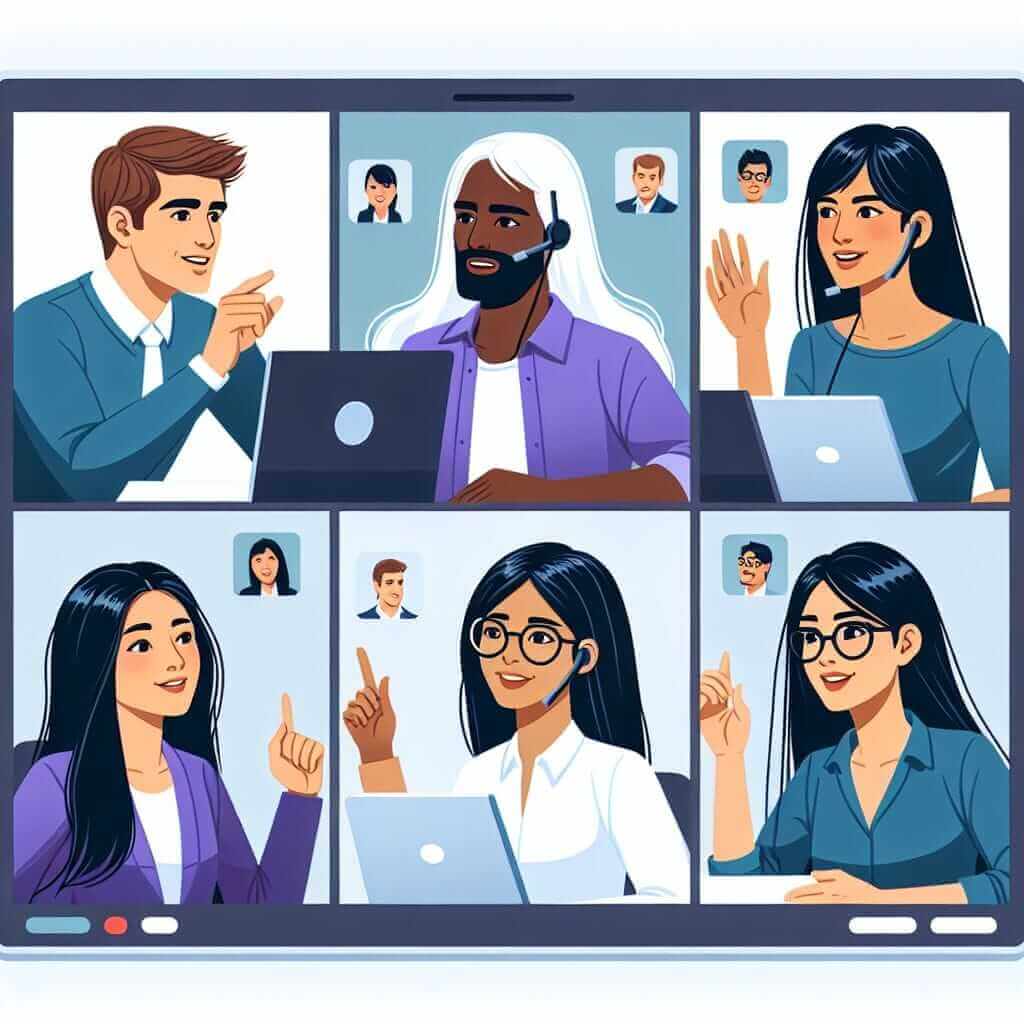The influence of technology on social interactions is a prevalent topic in IELTS Writing Task 2. This theme often reappears given the ongoing debate about the benefits and drawbacks of technological advancements on human connectivity. By analyzing past IELTS prompts and understanding frequent patterns, we can anticipate its future occurrence and prepare effectively.
Frequently Appearing Prompts on Technology and Social Interactions
Based on past IELTS exams, here are some close variations of prompts:
- “Some people believe that technology has made human interaction more superficial. To what extent do you agree or disagree?”
- “Technology has significantly changed the way we communicate. Discuss the advantages and disadvantages of this change.”
- “Do you think the use of smartphones and the internet has improved or hindered social interactions?”
These prompts focus on various aspects of technology’s impact on social interactions. Given their relevancy, it’s crucial for IELTS candidates to be well-prepared for such topics.
Sample IELTS Writing Task 2 Question
Let’s choose one prompt for detailed analysis and creation of a sample essay.
Topic: Technology has significantly changed the way we communicate. Discuss the advantages and disadvantages of this change.
Detailed Analysis of the Chosen Prompt
This question requires you to:
- Discuss both the advantages and disadvantages of how technology has altered communication.
- Present a clear position, while maintaining a balanced argument throughout your essay.
Keywords to focus on:
- Technology
- Communication
- Advantages
- Disadvantages
Sample Essay
Technology has brought about a radical transformation in the way we communicate. This essay will discuss both the benefits and the drawbacks of such technological changes in our communication methods.
On the one hand, there are several advantages to the technological advancements in communication. Firstly, technology has made communication more efficient and instant. With tools like email, instant messaging, and video calls, people can now interact with others across the globe within seconds. This immediacy fosters global collaboration and deepens personal relationships despite physical distances.
Moreover, technology has provided platforms for diverse voices to be heard. Social media and other online platforms allow individuals to share their thoughts, experiences, and opinions on a global stage. This democratization of communication has enabled minority groups to gain visibility and support, thus fostering a more inclusive society.

On the other hand, the dependence on technology for communication presents notable disadvantages. A primary concern is the reduction in face-to-face interactions. As people increasingly rely on digital means to communicate, the opportunity for in-person socializing diminishes. This shift can lead to weakened social bonds and a decline in social skills, such as empathy and active listening.
Another significant issue is the risk of superficial interactions. Digital communication tools, while convenient, often facilitate brief and impersonal exchanges. Social media, for instance, tends to prioritize quick updates and likes over meaningful conversations. As a result, relationships may suffer from a lack of depth and authenticity.
In conclusion, while technology has indisputably enhanced the efficiency and accessibility of communication, it is essential to be mindful of its potential drawbacks. Balancing digital and face-to-face interactions remains crucial to ensuring that our social relationships remain strong and meaningful.
Word Count: 301
Tips for Writing Essays on This Topic
Vocabulary and Grammar
Vocabulary:
- Facilitate (verb): make an action or process easier. Example: “Technology facilitates instant communication.”
- Empathy (noun): the ability to understand and share the feelings of another. Example: “Face-to-face interactions often build empathy.”
- Democratization (noun): the action of making something accessible to everyone. Example: “The democratization of communication is evident in social media.”
- Superficial (adjective): appearing to be true or real only until examined more closely. Example: “Social media often leads to superficial interactions.”
Grammar:
- Practice using complex sentences to demonstrate a range of grammatical structures. Example: “While technology enhances communication efficiency, it also poses risks to social skills.”
- Ensure proper use of transition words to maintain the flow of your essay. Example: “Moreover, however, on the other hand.”
Common Mistakes to Avoid
- Overgeneralization: Avoid making broad statements without evidence.
- Lack of balance: Ensure you discuss both sides of the argument as required by the prompt.
- Ignoring word count: Stay within the 250-300 word range to meet IELTS requirements.
Key Vocabulary Words to Remember
- Efficient (adjective) /ɪˈfɪʃ.ənt/: Achieving maximum productivity with minimum wasted effort or expense.
- Accessibility (noun) /əkˌses.əˈbɪl.ə.ti/: The quality of being able to be reached or entered.
- Empathy (noun) /ˈem.pə.θi/: The ability to understand and share the feelings of another.
- Superficial (adjective) /ˌsuː.pəˈfɪʃ.əl/: Existing or occurring at or on the surface.
- Collaboration (noun) /kəˌlæb.əˈreɪ.ʃən/: The action of working with someone to produce something.
Conclusion
Understanding the influence of technology on social interactions is crucial for tackling IELTS Writing Task 2 questions effectively. By exploring both the benefits and drawbacks, candidates can present well-rounded arguments. Future prompts may include variations of this theme, so regular practice and familiarization with relevant vocabulary and grammar are recommended.
Additional Practice Prompts:
- “To what extent has technology impacted the quality of human interactions?”
- “Discuss how digital communication tools have changed workplace dynamics.”
With thorough preparation and practice, you can confidently approach any IELTS Writing Task 2 prompt on this topic.